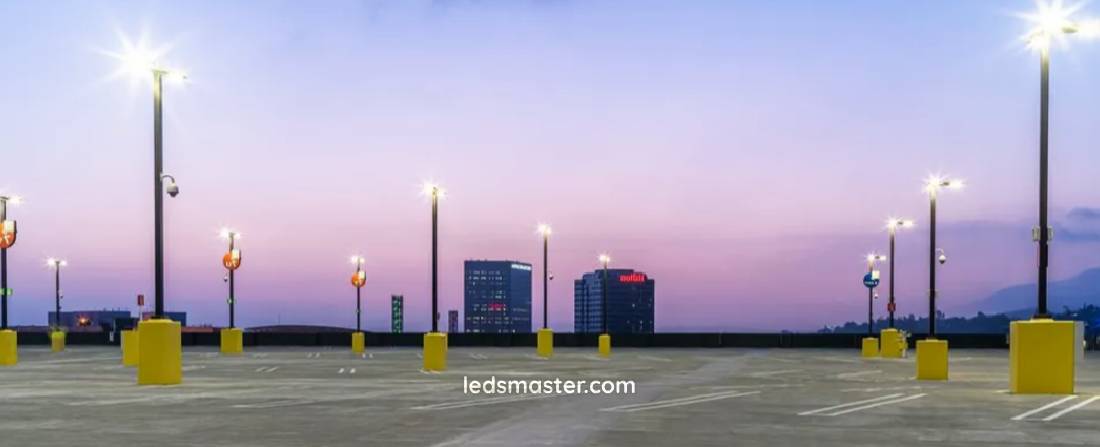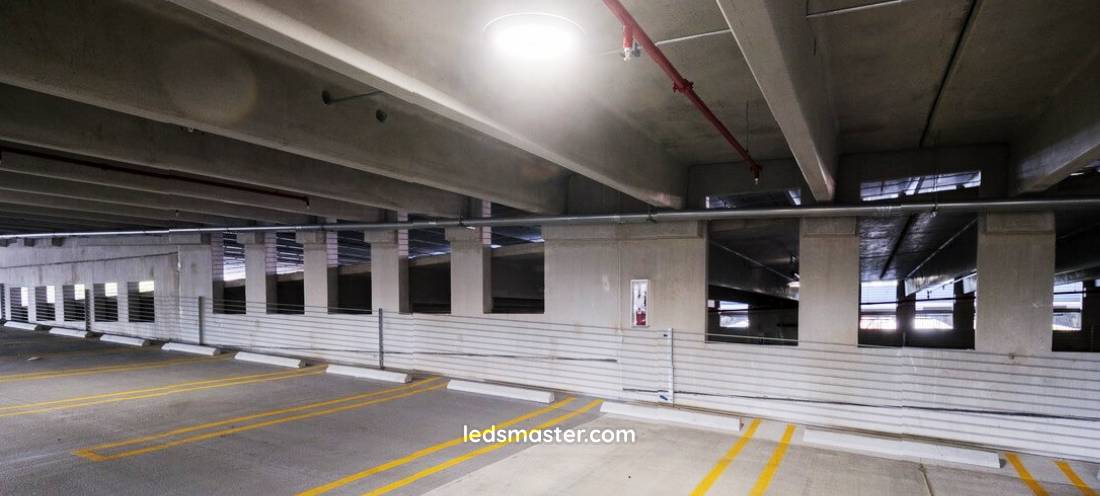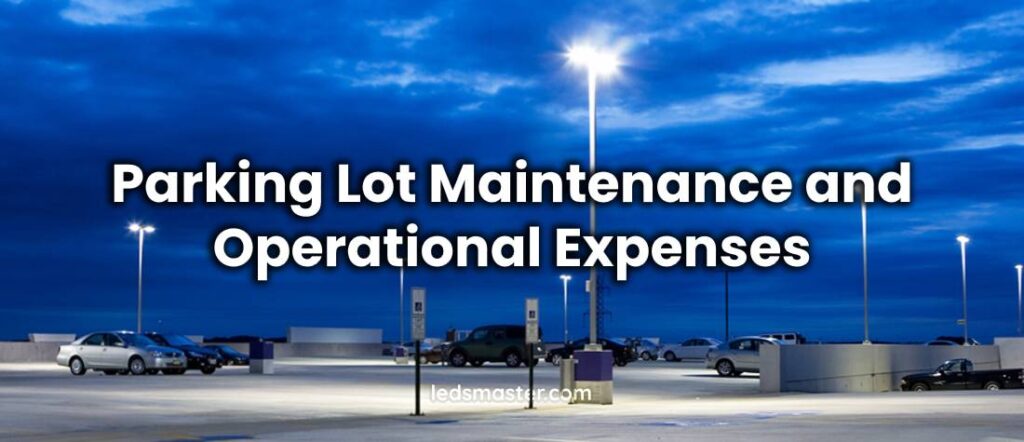Table of Contents
ToggleWhy Do We Need to Maintain Parking Lot Facilities?
Maintaining parking lots goes beyond merely ensuring the surface is free of potholes and debris. Proper upkeep is required to make sure the space remains functional and accessible to users. A well-maintained parking lot enhances the safety of those who use it, minimizes the risk of accidents, and supports the longevity of the infrastructure. Regular maintenance not only increases the aesthetic appeal of the area but also has a direct impact on reducing repair costs in the long run.
Prevention of Larger Issues
Parking lots are constantly exposed to wear and tear from both vehicles and the elements. Over time, the surface can deteriorate due to factors like weather conditions, the weight of cars, and constant traffic. The gradual breakdown of the asphalt or concrete surface can lead to cracks, potholes, and surface irregularities. These small issues, if left unchecked, can evolve into larger, more expensive problems. Potholes, for example, can become safety hazards, and the longer they are left unaddressed, the more costly it becomes to repair them. Regular maintenance, such as filling in cracks and resurfacing, ensures the longevity of the parking lot.
Enhancing Safety and User Experience
A well-maintained parking lot has a direct effect on user satisfaction. If the lot is poorly lit, full of potholes, or difficult to navigate, it can discourage people from using the space. Issues such as poorly marked spaces, uneven pavements, or lack of clear directional signage can confuse drivers, leading to accidents or congestion. Regular inspections and repairs help maintain a clean, functional, and accessible environment that encourages users to return. Also, when users feel that the space is safe and well-maintained, they are more likely to return in the future.
How to Calculate the Electricity Cost of a Parking Lot?

The electricity cost of a parking lot can be broken down into several components, primarily the lighting and any electrical equipment used for maintenance or security. To calculate these costs, a few key factors must be considered, including the number of light fixtures, the type of bulbs used, their wattage, and the hours they operate.
| Component | Details | Calculation | Result |
|---|---|---|---|
| Number of Light Poles | 50 | – | – |
| Wattage per Light Bulb | 150 watts | 50 x 150 watts | 7,500 watts |
| Daily Energy Consumption | 7,500 watts used for 12 hours a day | 7,500 watts ÷ 1,000 | 7.5 kWh/day |
| Monthly Energy Consumption | Lights operational 30 days a month | 7.5 kWh/day x 30 days | 225 kWh/month |
| Cost per kWh | Local utility rate | $0.12 per kWh | – |
| Monthly Electricity Cost | Total energy consumption x cost per kWh | 225 kWh x $0.12 | $27.00 |
| Other Electrical Components | Security systems, automated gates, etc. | Calculate based on wattage and hours | Add to total electricity cost |
Estimating the Energy Usage
The first step in calculating the electricity cost is determining the total wattage of the lighting system. For example, if there are 50 light poles, each with a 150-watt bulb, the total wattage would be 7,500 watts (50 x 150). If the lights are used for 12 hours a day, the daily energy consumption would be 7.5 kilowatt-hours (kWh), calculated as 7,500 watts divided by 1,000.
Once the energy consumption per day is determined, the next step is to calculate the monthly usage by multiplying the daily consumption by the number of days the lights are in use. If the parking lot is operational 30 days a month, the total monthly energy usage would be 225 kWh (7.5 kWh x 30). Finally, the monthly electricity cost can be calculated by multiplying the total energy usage by the cost per kilowatt-hour charged by the utility provider. If the rate is $0.12 per kWh, the monthly electricity cost would be $27.00 (225 kWh x 0.12).
Other Electrical Components
In addition to lighting, other electrical equipment in the parking lot, such as security systems, automated gates, and ticket machines, may also contribute to electricity costs. To calculate their impact, the same process is used—determine the wattage, the number of devices, the hours of operation, and the local electricity rate. The total energy usage for all the electrical devices can then be summed to get a clearer picture of the overall electricity expenditure.
How to Reduce Operational Costs in a Parking Lot?

Operational costs can be a substantial part of the overall expenses associated with maintaining a parking lot. While some costs are fixed, there are strategies to minimize others, thereby improving the efficiency of the operation.
Efficient Lighting Solutions
One of the most effective ways to reduce operational costs is by upgrading the lighting system. Replacing traditional bulbs with energy-efficient options such as LED lights can lower electricity consumption. LED lights use less power and have a longer lifespan, meaning they need to be replaced less frequently. Installing motion sensors or timers can further reduce energy consumption by ensuring that lights are only on when necessary. These lighting systems can also be automated to switch off during daylight hours or when there is no activity, significantly lowering the overall electricity usage.
Smart Technology for Monitoring and Maintenance
Implementing smart technologies can help to reduce maintenance and operational costs. For example, sensors can be installed in parking spaces to monitor occupancy and provide real-time data to users. This reduces the amount of time spent driving around looking for a space, improving traffic flow and reducing energy consumption. Similarly, smart maintenance systems can alert managers when a part of the parking lot needs attention, allowing for proactive repairs before more significant issues arise. This minimizes the need for emergency repairs, which are often more costly than planned, routine maintenance.
Routine Maintenance Schedules
By establishing a regular maintenance schedule, costs can be managed more effectively. Smaller repairs, when caught early, are less expensive than larger repairs needed after extensive wear and tear. This proactive approach helps to avoid costly resurfacing or significant drainage work that may be necessary if minor issues are not addressed. Regular maintenance also helps to maintain the appearance of the parking lot, which can contribute to its appeal and user satisfaction.
Reduced Water Usage
Water management can also contribute to reducing operational costs. Installing water-efficient drainage systems, such as permeable paving or rainwater harvesting systems, can minimize the amount of water needed for cleaning or irrigation. Additionally, regular maintenance of the drainage systems ensures that water is efficiently channeled, preventing costly flooding and damage to the pavement. Water conservation measures can also be integrated into landscaping, such as using drought-resistant plants or installing automated irrigation systems that are tailored to the climate.
Outsourcing and Contracting Services
Sometimes outsourcing maintenance services to a specialized contractor can reduce operational costs. Instead of hiring full-time staff to handle every aspect of parking lot management, contracting services for specific tasks such as security, landscaping, or cleaning can be more cost-effective. Contractors typically bring expertise, and their services can be used as needed, reducing the overhead costs associated with having in-house staff. For example, security services could be outsourced to a third-party security company that provides the required staff and technology at a lower cost than maintaining an in-house security team.
By carefully analyzing and addressing each aspect of parking lot management, costs can be reduced without compromising the safety, functionality, or accessibility of the facility. The combination of improved lighting, the use of smart technologies, routine maintenance, water management, and outsourcing services can help achieve more efficient operations, ultimately reducing overall expenses.
How to Maintain a Parking Lot?
Maintaining a parking lot requires a structured approach to address different aspects of the facility. These include surface maintenance, signage, lighting, drainage systems, and security features. Proper maintenance is a multi-faceted process that requires careful attention to detail and timely action.
Surface Maintenance
Addressing Surface Damage
The surface of a parking lot is exposed to constant stress, which can cause cracks, uneven surfaces, and potholes. These issues should be repaired promptly to avoid further damage and prevent larger, more expensive problems from occurring. Depending on the size and condition of the parking lot, this may involve patching small cracks, resurfacing, or even repaving sections of the lot. For example, cracks can be sealed with a rubberized crack filler to prevent water from penetrating the surface, which can worsen the damage during winter months when freezing occurs. Resurfacing the lot every few years, depending on the traffic volume and wear, can extend the lifespan of the lot and provide a smoother driving experience for users.
Regular Inspections
Regular inspections of the parking lot’s surface are crucial in maintaining the overall structure of the surface. These inspections should be conducted after severe weather events, especially during the winter when freeze-thaw cycles can create significant damage. In addition to checking for visible damage like cracks and potholes, it is also important to monitor the overall condition of the asphalt or concrete, including any signs of wear from repeated heavy vehicle loads.
Drainage Systems
Importance of Drainage
Proper drainage is essential to the long-term health of a parking lot. Water that pools on the surface can cause further damage to the pavement and create hazards for users. Standing water can also lead to slippery surfaces, increasing the risk of accidents. A poorly designed or clogged drainage system can result in flooding, which can erode the surface and cause significant damage to the infrastructure.
Regular Drainage Maintenance
To ensure water flows away from the parking lot effectively, it is important to inspect and maintain the parking lot’s drainage systems regularly. This includes checking gutters, storm drains, and catch basins for blockages, debris, and signs of damage. A good drainage system helps maintain the integrity of the parking lot and prevents water from accumulating on the surface. It also prevents long-term damage caused by erosion, which can lead to costly repairs. In areas with frequent rainfall or snow, stormwater management systems should be designed to handle large volumes of water and direct it away from the parking lot efficiently.
Lighting and Signage
Importance of Proper Lighting
Lighting is a vital component of parking lot maintenance. It enhances visibility at night, which improves safety for both pedestrians and drivers. Well-lit areas reduce the risk of accidents and make users feel more secure. The absence of proper lighting can create dark spots where individuals feel unsafe, increasing the likelihood of theft, vandalism, or accidents.
Regular Lighting Checks
Over time, bulbs may burn out, or electrical systems may require maintenance. Replacing broken lights and ensuring that the electrical systems are in working order is an important part of parking lot upkeep. Additionally, it is important to ensure that lighting is strategically placed throughout the parking lot to ensure proper illumination of all areas. Parking lots with inadequate or poorly positioned lighting can have spots that are not lit, which increases the risk of accidents. Routine checks, bulb replacement, and ensuring that all light poles are properly functioning should be part of the regular maintenance schedule.
Signage Maintenance
In addition to lighting, the placement and condition of signage play a crucial role in maintaining order and safety. Signs that are faded, damaged, or difficult to read can create confusion and lead to traffic issues. Signs should be clear and visible, directing traffic flow, indicating parking spaces, and alerting users to any special conditions (e.g., time-limited parking or restricted areas).
As part of maintenance, parking lot signage should be inspected regularly, and damaged or illegible signs should be replaced promptly. Proper signage helps ensure smooth operations, directs users to available spaces, and reduces congestion and confusion within the lot.
Security Features
Surveillance and Security Measures
Parking lot security is another area where maintenance plays a role. Security cameras, gates, and barriers require regular checks to ensure they are functioning properly. Malfunctioning security systems can leave the parking lot vulnerable to theft, vandalism, and accidents. Proper surveillance and secure entry points can deter criminal activity and make users feel more comfortable using the facility.
Regular Security Inspections
Routine inspections and timely upgrades are necessary to ensure that security systems remain effective. Cameras should be checked to ensure they are operating correctly, with lenses free of dirt and debris. In addition, parking lot gates and barriers should be regularly inspected for signs of wear and tear. Any damaged security devices, including cameras, alarms, or access control systems, should be repaired or replaced to maintain the overall safety of the lot.
Conclusion
Maintaining a parking lot requires careful attention to various factors that influence both operational costs and user experience. By optimizing lighting systems, utilizing smart technology, sticking to a regular maintenance schedule, and managing water usage efficiently, parking lot owners can significantly reduce expenses. Outsourcing services and performing proactive repairs can also lower costs while maintaining safety and functionality. These strategies ensure that parking lots are not only cost-effective but also provide a better experience for users, extending the life of the facility and improving overall efficiency.

